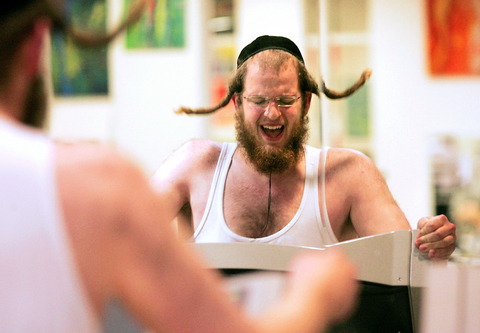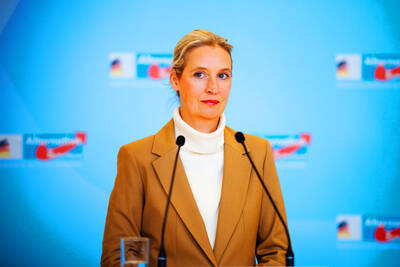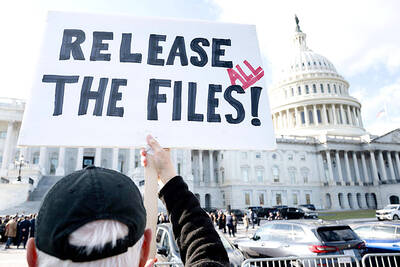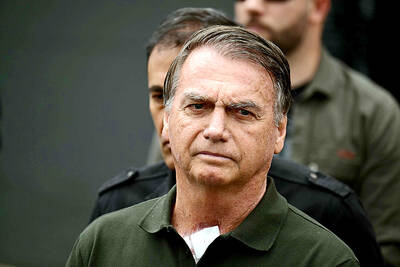The newly opened Kosher Gym in Jerusalem offers prayer books instead of magazines at its juice bar, and bearded men listen to Talmudic interpretations on earphones as they exercise.
In an Internet chat room, messages about Outlook and Microsoft pop up in Yiddish. At upscale kosher restaurants, men in black hats and sidecurls, accompanied by wives in wigs and long dresses, sip fine wines.
If that's one face of the haredim -- "the God-fearing," as Israel's ultra-Orthodox Jews refer to themselves -- another is the young hotheads who torch clothing stores in their neighborhood for selling "immodest" attire and hurl bleach at women who wear it.

PHOTO: AP
From cellphones to Stairmasters, from women's rights to Hebrew slang, the outside world is seeping into the cloistered haredi community and plunging it into a tug-of-war between a tentative embrace of modernity and fierce resistance.
Similar communities are replicated across the world, with the Bible and Jewish law central to their lives. The difference is that in New York, London or Sydney they have little impact on society around them. In Israel, the relationship is very different, and often bumpy.
Haredi political parties have often held the political power to make or break a government. The men spend their lives in prayer and study, subsidized by taxpayers who can't see why they don't just get a job. Every secular Israeli, male and female, must do military service, the great leveler in a country of immigrants from east and west. But haredim are exempt.
They belong to a religious power structure which at various times during Israel's existence has managed to ban public transport on the Sabbath, grounded El Al, the national airline, on holy days, and has absolute control of all Jewish marriage and divorce. This power was reinforced last month when 12 of 15 new rabbinical court judges were recruited from the ultra-Orthodox -- a move that caused a furor among secular Israelis who had hoped more moderate judges would join the court.
Haredim tend not to take firm stances on the big issue confronting Israeli society -- war and peace with the Arabs. But their birthrate of seven children to a family is a force in Israel's demographic race against the Palestinians.
As Israeli society grows more pluralist, advancing the rights of women and gays, the haredim cling to the old ways, and sometimes the clash is extreme. In 2005, when Jerusalem held a gay pride parade, a protesting ultra-Orthodox Jew stabbed and wounded three marchers.
Yet reality is forcing change in many areas.
The haredim, many of whom once opposed Zionism as a blasphemous pre-empting of the Messiah, have largely made their peace with the Jewish state.
At the same time, election results have enabled coalition governments to be formed without the haredim. The sidelining of haredi parties in recent years has led to cutbacks in their subsidies, and haredim are beginning to trickle into the job market.
"There are many changes coming in the haredi world, because you can't offer only one lifestyle, you can't offer only one life opportunity for a whole range of abilities and spiritual levels. You'll lose too many that way," said Jonathan Rosenblum, a haredi columnist.
The word haredi is an umbrella term for a variety of groups, each following its own ancient sages and living rabbis.
It broadly means anyone who takes the maximalist approach to Jewish law and follows a lifestyle whose most visible characteristics are unlikely to change soon.
Haredi neighborhoods in Jerusalem or the Tel Aviv suburb of Bnei Brak feel like 18th century European ghettos: men in long black coats and large fur hats called streimels; women in shapeless dresses covering their wrists and ankles, wrapped in scarves or wigs because they shave their heads when they marry.
In Mea Shearim, Jerusalem's largest haredi neighborhood, cars are banned on the Sabbath and toddlers ride tricycles down the middle of the street. In synagogues, men press their lips to the words of an open Torah scroll.
Haredi households shun TV, and haredi rabbis have ruled that only cellphones without Internet access are permissible.
Israel's haredim number an estimated 600,000 -- nearly 9 percent of the population and growing fast. Jerusalem, the city at the center of the Arab-Israeli conflict, is now one-third haredi and has its first ultra-Orthodox mayor.

A feud has broken out between the top leaders of the far-right Alternative for Germany (AfD) party on whether to maintain close ties with Russia. The AfD leader Alice Weidel this week slammed planned visits to Russia by some party lawmakers, while coleader Tino Chrupalla voiced a defense of Russian President Vladimir Putin. The unusual split comes at a time when mainstream politicians have accused the anti-immigration AfD of acting as stooges for the Kremlin and even spying for Russia. The row has also erupted in a year in which the AfD is flying high, often polling above the record 20 percent it

Ecuadorans are today to vote on whether to allow the return of foreign military bases and the drafting of a new constitution that could give the country’s president more power. Voters are to decide on the presence of foreign military bases, which have been banned on Ecuadoran soil since 2008. A “yes” vote would likely bring the return of the US military to the Manta air base on the Pacific coast — once a hub for US anti-drug operations. Other questions concern ending public funding for political parties, reducing the number of lawmakers and creating an elected body that would

The latest batch from convicted sex offender Jeffrey Epstein’s e-mails illustrates the extraordinary scope of his contacts with powerful people, ranging from a top Trump adviser to Britain’s ex-prince Andrew. The US House of Representatives is expected to vote this week on trying to force release of evidence gathered on Epstein by law enforcement over the years — including the identities of the men suspected of participating in his alleged sex trafficking ring. However, a slew of e-mails released this week have already opened new windows to the extent of Epstein’s network. These include multiple references to US President Donald

CHARGES: The former president, who maintains his innocence, was sentenced to 27 years and three months in prison for a failed coup bid, as well as an assassination plot Far-right former Brazilian president Jair Bolsonaro is running out of options to avoid prison, after judges on Friday rejected his appeal against a 27-year sentence for a botched coup bid. Bolsonaro lost the 2022 elections and was convicted in September for his efforts to prevent Brazlian President Luiz Inacio Lula da Silva from taking power after the polls. Prosecutors said the scheme — which included plans to assassinate Lula and a top Brazilian Supreme Court judge — failed only due to a lack of support from military top brass. A panel of Supreme Court judges weighing Bolsonaro’s appeal all voted to uphold